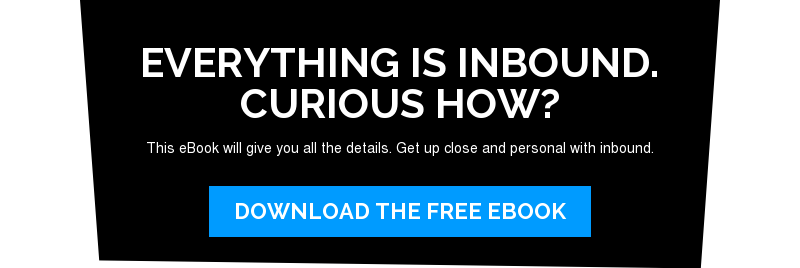
Why is your company on social media? I’m going to guess it’s because of one of three reasons: to build brand awareness, to engage with your customers, or to have another way to get the word out about new products or specials. What if I told you that all three of these reasons directly related to the inbound methodology? Yes, you’ve been inbounding and you didn’t even know it.
Social media is one of the main tools used in the world of inbound marketing. It’s one of the best ways to attract visitors to your site, convert them into leads, and then delight them as they become customers. Let’s dig a little deeper into how social media plays a role in each of the steps of the inbound methodology.
Step One: Attract

According to the U.S. Census Bureau, there were 7,488,353 businesses listed in the United States as of 2013. How in the world are you supposed to make people aware of your business when there’s millions of others out there competing for consumers' attention too? Answer: go where the consumer goes. Specifically, go where your persona or target audience goes.
If I challenged you to name 10 people under the age of 50 who don’t have a social media account, you’d likely have a tough time. Not only are you able to reach massive amounts of people on social media, but it can be done for a very small price – free even if you’re able to build a great organic following.
With your established social media platforms, you are able to post links back to your site in order to attract your followers to it. You’re even able to reach a very specific audience for a small price simply by “boosting” posts or setting up ads. Other than Google, there’s no better way to attract people back to your site, and chances are, you’re already using social media to do this.
Step Two: Convert
In most instances, convert means to become a lead by showing interest in a company’s offerings. In the inbound methodology, in order to convert, a prospect will need to fill out some type of form. These forms act like miniature "yesses" and move the persona further down the funnel at their own pace. In most instances, this form is located on your website. So how does the convert stage relate to social media for business?
Have you ever posted a link to your newsletter sign-up page, and encouraged your followers to go sign up? How about shared a link to sign up for an event? You’re using social media as the first step in the convert process in order to get them to the page you want them to convert on.
Step Three: Close
Up until recently, the “close” stage was reserved mainly for your website or in-store. But now, social media platforms such as Twitter and Pinterest are making it possible to buy items directly from customers’ newsfeeds. This new development could have a huge impact on certain types of businesses. If this is of interest to you, learn a little more about it here. Again, this happens when people are ready on their own terms. It's not about you or your business trying to get the sale, or the "close," rather it's about your business or service being the ultimate solution your now customer was looking for.
Step Four: Delight
Other than awareness, the delight stage is the stage most companies are intending their social media platforms be utilized for. Posting photos of a customer and their new purchase, asking your followers what they like best, or responding to negative comments on your page are all ways you are delighting your customers and making them feel good about your brand.
So there you have it. Even if you didn’t know it, you’ve been doing a small piece of inbound marketing all along where your social channels are concerned. If you’re ready to put the other pieces into play, download our strategic inbound campaign worksheet.

